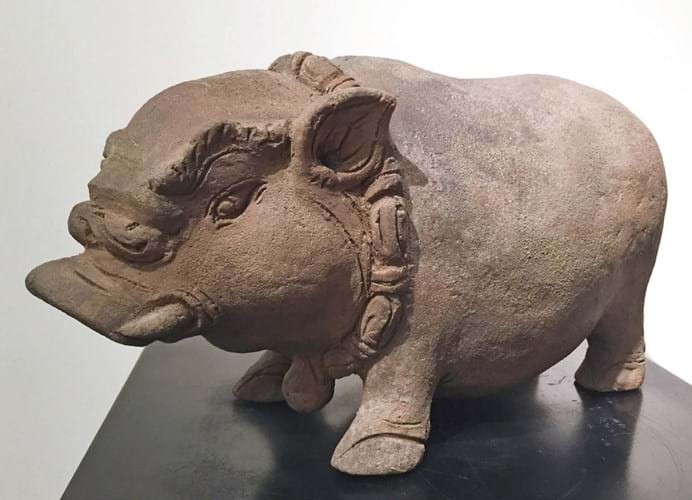The Chinese were subsequently responsible for the first regular use of coins in Java (a practice that became widespread by the 15th century) which encouraged the creation of a large number of terracotta rams, turtles, frogs and pigs, each with a slot in the back for the insertion of copper coins.
It is thought they had a ritual function, attached to household or village shrines rather than owned by individuals. Pigs were particularly popular because of their association with prosperity.
Jonathan Tucker of the St James’s gallery of Jonathan Tucker and Antonia Tozer has been selling Javanese Majapahit piggy banks for over 20 years, with this 12½in (32cm) reddish-brown terracotta example priced at £2500.
“They were usually modelled with great care, wearing heavy necklaces and consisting of short, squat legs supporting great fat bodies,” Tucker says.














